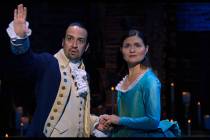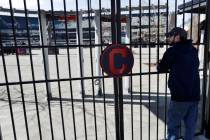‘Fury’ a brutal tale of violence, mayhem
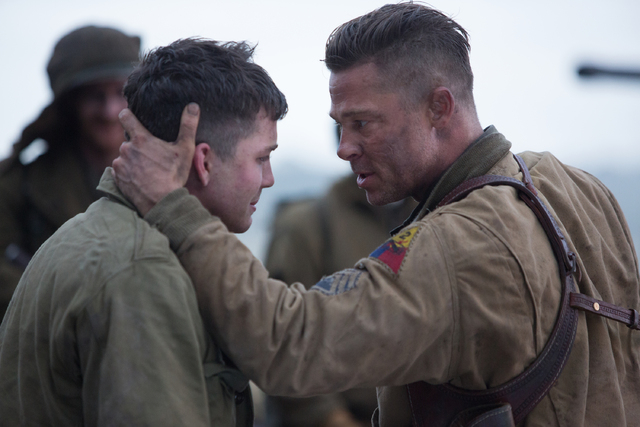
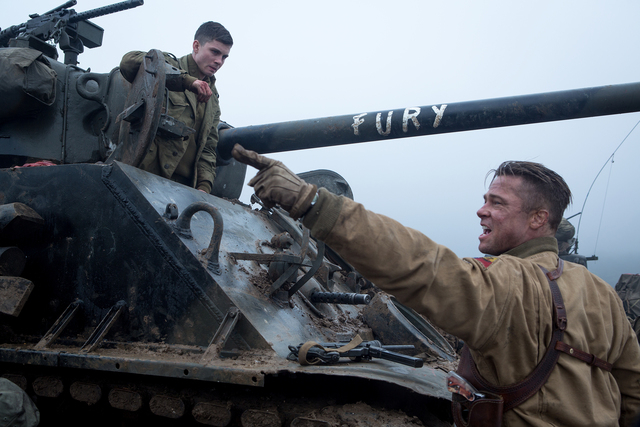
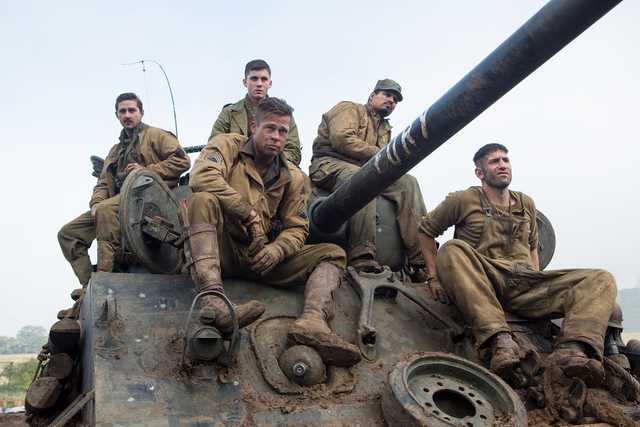
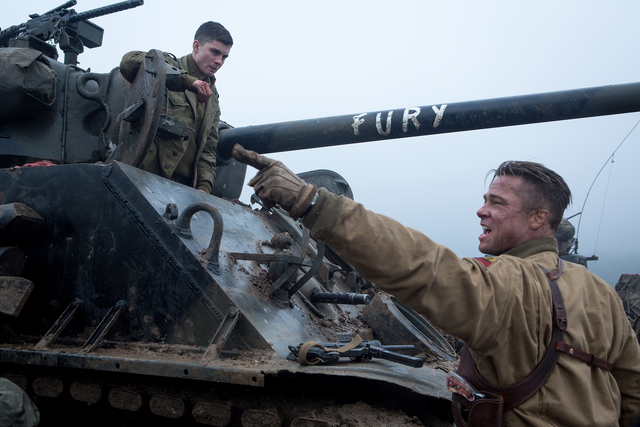
Is it fair to knock a movie for a flaw you didn’t realize was there?
In “Fury,” an untested, untrained teetotaler (Logan Lerman) is thrust into a tank full of grizzled veterans as the replacement for a deceased crew member. It’s April 1945, deep in the heart of Germany, and the tank’s commander (Brad Pitt) must whip the newbie into shape before he gets himself and the rest of the five-man crew killed. Over the course of 133 minutes, the rookie stops crying, falls in love with a German girl, wins the grudging respect of his colleagues and, through a series of harrowing battles, becomes a full-fledged killing machine.
I found it to be an engaging, gripping look at the ways the atrocities of war can change a man.
Then I looked at the production notes, which point out several times that the entirety of “Fury” is supposed to take place over the course of 24 hours.
Twenty-four hours? Even Jack Bauer would roll his eyes at that one before going back to torturing some poor schmuck.
“Fury” opens in the aftermath of a terrible battle, with burned-out tanks littering a muddy field.
Don “Wardaddy” Collier (Pitt) and his three surviving crew members — the religious, unfortunately mustachioed gunner Boyd Swan (Shia LaBeouf), dependable driver Trini Garcia (Michael Peña) and the practically feral loader Grady Travis (Jon Bernthal) — roll back to their base battered, bruised and grieving for their fallen comrade.
Within minutes, they’re assigned Norman Ellison (Lerman), who’s been in the Army all of eight weeks. Not only did he not graduate from tank school, he’s never even seen the inside of one of the giant metal beasts. They’re visibly appalled to learn that Uncle Sam trained Norman not to fight but to pound out 60 words a minute as a clerk typist.
Norman’s first duty as assistant driver of Wardaddy’s tank, the Fury, is to clean up the blood — and part of the face — of his seat’s previous occupant.
The rest of the crew of the Fury, the name scrawled across its 76 mm gun, has been together for three years. They’re older, war-hardened and they trust one another with their lives. And they want nothing to do with Norman, who not only doesn’t drink or smoke, he looks barely old enough to shave.
When Norman’s reluctance to fire on the enemy leads to tragedy, Wardaddy forces him to participate in what could charitably be described as a war crime. “It’s not right!,” the youngster protests. “We’re not here for right and wrong,” Wardaddy lectures. “We’re here to kill them.”
Writer-director David Ayer has been responsible for films lauded (“End of Watch”) and loathed (“Sabotage”). With “Fury,” he crafts a brutal tale of violence and mayhem. But the carnage takes a break for a middle act that shows off the hearts of some of its characters — figuratively for a change.
The battle scenes are alternately agonizing and inspiring. They’re graphic without ever reaching the unrelenting horribleness of the bloody tides and exposed entrails of “Saving Private Ryan’s” Omaha Beach landing.
Between encounters, the Fury helps liberate a German town where children were hanged for refusing to join the fight. During a search of the surrounding buildings, Wardaddy and Norman spend a touching interlude holed up with female cousins (Anamaria Marinca, Alicia von Rittberg). “She’s a good clean girl,” Wardaddy tells Norman about the younger Emma. “If you don’t take her in that bedroom, I will.”
On paper, it sounds rapey. But the gesture is one of kindness, a paternalistic celebration of youth and life in the middle of nightmarish devastation. For the most part, Pitt skillfully hides the cracks in Wardaddy’s been-there, killed-that exterior. But here, removed from the three men who know him best, Wardaddy allows himself to relax and be human. (He also takes a moment to freshen up because he’s played by Brad Pitt, and any director with an eye on the box office is going to get Brad Pitt shirtless.)
When viewed as dispatches from several weeks on the front lines, Norman’s character arc feels organic. He matures from boy to man based upon the horrors he’s seen. But the way Ayer envisions him, Norman toughens up faster than a $2 steak.
The Fury is at a disadvantage from the start, as the German tanks have vastly superior armor and weaponry. Ayer wrings genuine, edge-of-your-seat suspense out of a one-on-one battle between the slow, lumbering behemoths.
“The Fury,” though, is only at a disadvantage when you consider its day-in-the-life ambitions you’d likely never notice in the first place.
Contact Christopher Lawrence at clawrence@reviewjournal.com or 702-380-4567.
Review
“Fury”
133 minutes
R; strong sequences of war violence, some grisly images, and language throughout
Grade: B
At multiple locations




